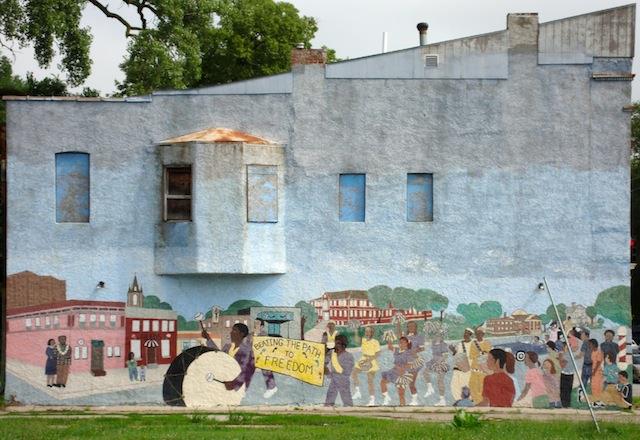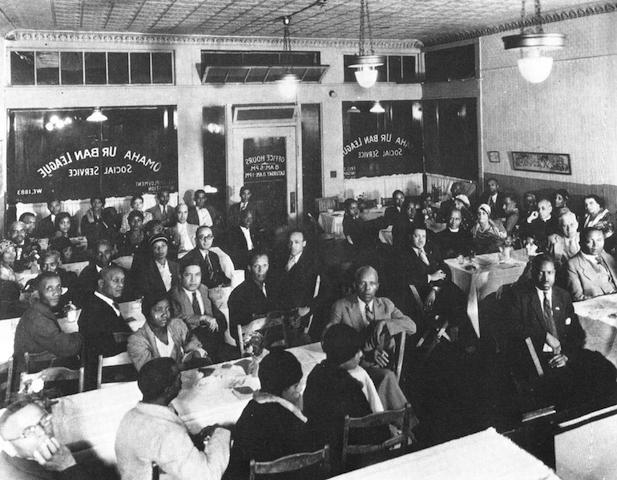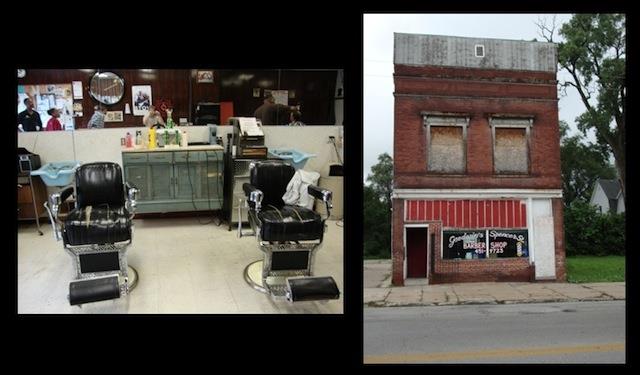Making Invisible Histories Visible
Page Navigation
- Making Invisible Histories Visible
- Lesson Plans and Resources
- iBooks on Omaha and Nebraska History for Primary Students
- Omaha Mapping Projects
-
African American Histories
- African American Artists
- African American Athletes & Facilities
- African American Churches
- African American Civil Rights Organizations - 1950s-1960s
- African American Civil Rights
- African American Contributions to Jazz, Gospel, Hip-Hop
- African American Dramatic Arts
- African American Education - Dorothy Eure & Lerlean Johnson
- African American Educators & Education
- African American Firefighters
- African American Homesteaders
- African American Law Enforcement
- African American Migration to Omaha
- African American Musicians of Omaha
- African American Newspapers
- African American Owned Businesses
- African American Politicians
- African American Social Life
- African American Workers at Omaha's Railroads & Stockyards
- African American Workers at the Naval Ammunition Depot in Hastings
- African Americans in the Civil War
- African Americans in Vietnam
- Charles B. Washington - Journalist and Civil Rights Leader
- Elizabeth Davis Pittman - Lawyer/Judge
- Green Book Omaha
- Marlin Briscoe - Professional Football Player
- Native Omaha Days
- Nebraska's Role in the Underground Railroad
- Sen. Edward Danner - Politician & Civil Rights Activist
- Sudanese Refugees
- Tuskegee Airmen
- European and Asian Immigrant Histories
-
Historic Neighborhoods & Buildings
- 24th and Binney/Wirt/Spencer Streets
- 24th and Lake Streets
- Central Park Neighborhood - 42nd and Grand Avenue
- Dahlman Neighborhood - 10th and Hickory Streets
- Hartman Addition Neighborhood - 16th and Williams Streets
- Indian Hills/Southside Terrace Neighborhood - 30th and Q Streets
- Jefferson Square Neighborhood - 16th and Chicago Streets
- Long Neighborhood - 24th and Clark Streets
- Orchard Hill Neighborhood - 40th and Hamilton Streets
- Smithfield Neighborhood - 24th and Ames Avenue
- St. Mary's Neighborhood - 30th and Q Streets
- Latino Histories
- Music Histories
-
Native American Histories
- Black Elk and John G. Niehardt
- Chief Standing Bear and Susette La Flesche Tibbles
- Dr. Susan LaFlesche Picotte - Native American Doctor
- Native American Education and Boarding Schools
- Native Americans in the Military
- Pre-statehood Interaction of Native Americans and Europeans
- Preserving Native American Tradition
- Restoring the Ponca Tribe
- The American Indian Movement in the 1960s and 1970s
- The Indian Congress at the 1898 Trans-Mississippi Exposition
- The Omaha Native American Indian Tribe
- OPS Elementary School History
- Redlining in Omaha
- Nebraska's Role in the Underground Railroad
- The 1898 Trans-Mississippi Exposition
A Time for Justice: Omaha's Struggle for Civil Rights
-
What were some of the goals of civil rights organizers in North Omaha?
Civil Rights in Omaha
-
North Omaha has a long, complex history of civil rights that remains largely unnoticed. Not only is it the birthplace of an important political and cultural leader, Malcolm Little (later known as Malcom X), but also home of one of the longest running Black newspapers, the Omaha Star. From a small town barbershop on 24th and Spencer streets to marches and demonstrations that changed people’s lives, Omaha has captured people’s attention, from presidential candidates to the common folk. However, much of this history remains largely invisible…until now.
A 4.26 Video with 2010 interviews with Mary Thomas and Rev. Darryl Eure about the Omaha Urban League and their past work.
Civil Rights in North Omaha
-
It took the entire community to fight for civil rights and they are still fighting today. In this mural, Blacks celebrate stopping segregation and redlining, as well as gaining the right to vote while they continue to march along the path toward equality.

The Omaha Urban League
-
The Urban League was founded in 1910 to help Blacks from the South work and live in urban areas. The Omaha chapter was founded in 1927. Since that year, the Omaha Urban League has been influencing the entire city. Examples of its work includes marching against segregation, redlining, and police brutality, as well as meeting to help African Americans find well-paying jobs. At its height, chapter president Whitney Young was able to triple its membership. Its goal today is to help African Americans and people of all races become economically independent. (Douglas County Historical Society Archive Photo)

Spencer's Barbershop
-
At first glance, Spencer’s Barbershop may seem like an average building in an average town, but this place has lived through and created much of Omaha’s history. The barbershop is the location where a 29-year old barber named Ernie Chambers first gained national attention. The shop was the site of an Academy-Award nominated documentary “A Time For Burning,” featuring the future state senator. Spencer’s Barbershop still remains a place where people gather to discuss culture, family and society.

Additional Information
-
The struggle for racial justice was not unique to North Omaha. Throughout the nation, Blacks were fighting for equal rights. As part of this broader movement, civil rights organizations like the National Association for the Advancement of Colored People (NAACP), Universal Negro Improvement Association (UNIA), National Council of Negro Women (NCNW), Urban League, and Black Panthers all founded chapters in North Omaha. While they had many goals, some of their most important were increasing Black political representation, demanding fair and open housing, pushing for more jobs with equal pay, fighting police brutality, pressing for integrated and more historically accurate education, rallying support for the wrongly accused, and putting an end to the city’s practice of de facto segregation.
Nevertheless, the many ways Blacks went about securing their equal rights makes North Omaha’s story special. Groups like The DePorres Club, the Citizens Coordinating Committee for Civil Liberties (4CL), and the Black Association for Nationalism Through Unity (BANTU) — that were founded by North Omahans specifically to meet the needs of its population — have left a permanent mark on the city. In this turbulent time, leaders and landmarks were made out of average, everyday people and hangouts, such as Ernie Chambers, Denny Holland, Father Markoe, Spencer’s Barbershop, and the Omaha Star.
When we look up and down 24th Street and much of modern-day North Omaha, many see empty lots, abandoned buildings, and overgrown weeds. But in reality, these are the scars of an intense struggle for equal justice that is still going on today. Only in recognizing this history, by examining its leaders and pulling out its many lessons, are we able to progress in our pursuit of a beloved community.
2010 MIHV Project
Student Reflections
-
"Omaha seemed like a normal city to me. When I came to this camp it changed my mind, such as the barbershop on 24th street. I never knew a documentary was shot there. I also thought The Omaha Star was nothing to me but now that I learned a lot about it, such as it is one of the longest-running Black newspapers...Now it is a different story!"
— Justin H.
"The fact that Omaha has a lot of history that many people don't know of suprises me. I liked visiting North 24th Street and its buildings. I'm hopeful that the work we've done will change Omaha!"— Amilkar R.
"I was surprised to learn about Omaha's rich history. This really is a historic city. I've learned that Omaha has had a lot of ups and downs throughout the decades. I now believe that I can change this city for the better!"— Ronnie T.
Resources
-
Douglas County Historical Society.
A Street of Dreams. Nebraska ETV Network, 1992. Videocassette.
A Time for Burning. Bill Jersey & Barbara Connell (Dir.) 1967. DVD.
Federal Writers Project. (1939) Nebraska: A guide to the Cornhusker state. Nebraska State Historical Society.
Research compiled by: Justin H, Amilkar R, & Ronnie T.

